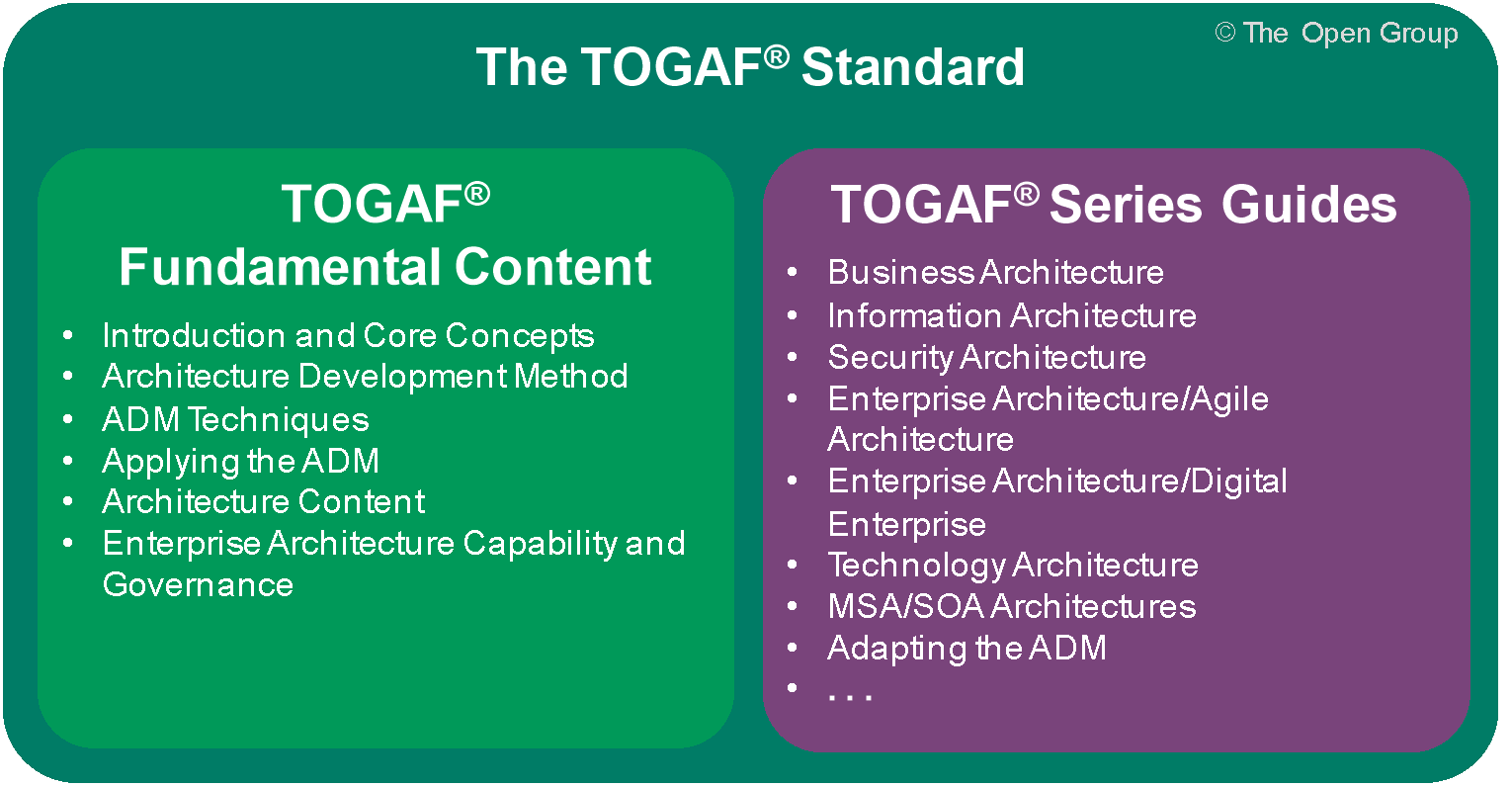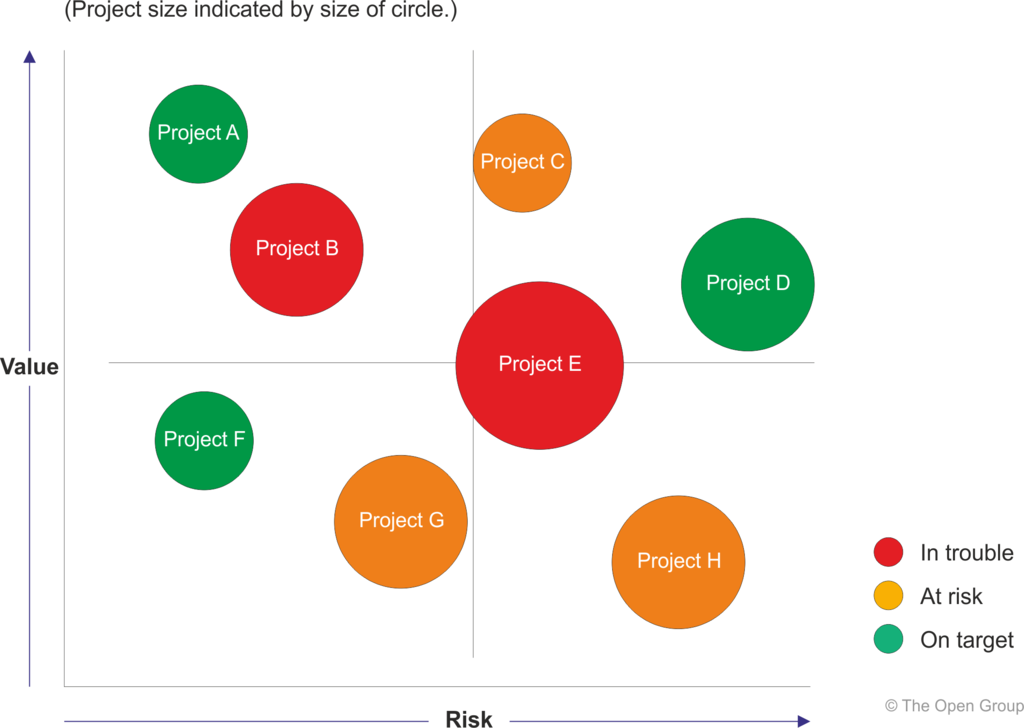Home » Archives for October 2024 » Page 3
TOGAF®—The Open Group Architecture Framework—is a leading enterprise architecture framework designed to improve business efficiency. It enables organizations to define their goals and align them with architectural objectives, particularly in the realm of enterprise software development. Since its inception in 1995, TOGAF has served as a common language for enterprise architects (EAs) to chart IT development strategies. Developed to facilitate cross-departmental collaboration, TOGAF helps enterprises achieve their key business objectives in a structured manner. According to the Open Group Architectural Forum, TOGAF's fundamental aims include: Ensuring a common language across the organization. Avoiding…
continue reading →
Introduction to the TOGAF Standard Welcome to the transformative world of TOGAF, where Enterprise Architecture (EA) is not merely a practice but a structured approach to guiding organizational change and improvement. The TOGAF Standard, 10th Edition, serves as a comprehensive resource designed to unlock the potential of Enterprise Architecture. Whether you are a seasoned practitioner, a leader of an EA team, or a sponsor overseeing strategic transformation, this guide enhances your understanding and utilization of the TOGAF framework. Key Components of the TOGAF Standard 1. TOGAF Fundamental Content: Essential Scaffolding Overview: This core section…
continue reading →
In today's fast-paced, technology-driven business landscape, having a robust and adaptable enterprise architecture is crucial for organizational success. This is where TOGAF, or The Open Group Architecture Framework, shines as the de facto standard for enterprise architecture. TOGAF offers a comprehensive approach to designing, planning, implementing, and governing an enterprise's information architecture. As a tool for assisting in the acceptance, production, use, and maintenance of enterprise architectures, TOGAF is built upon an iterative process model supported by best practices and a re-usable set of existing architecture assets. The Core Components of TOGAF At…
continue reading →
1. Introduction The TOGAF Standard — Architecture Development Method (ADM) Techniques provides a comprehensive framework for enterprise architects to develop and implement effective architecture solutions. This article explores the essential guidelines included in this document, detailing what they are, why they are important, and how they contribute to the successful development of Enterprise Architecture (EA) within the TOGAF framework. Architecture Principles What Architecture Principles establish foundational guidelines for the use and deployment of IT resources across an organization. They serve as a reference point for decision-making throughout the architecture development process. Why These…
continue reading →
Introduction In any architecture or business transformation effort, the presence of risk is unavoidable. Recognizing, classifying, and mitigating these risks before commencing the transformation is crucial for ensuring successful outcomes. TOGAF (The Open Group Architecture Framework) provides a comprehensive framework for managing risks throughout the architecture development lifecycle, ensuring that risks are effectively monitored, managed, and mitigated in alignment with organizational objectives. Understanding Risk Management in TOGAF TOGAF emphasizes a systematic approach to risk management, recognizing that risks can impact various phases of the Architecture Development Method (ADM). The framework breaks down risk…
continue reading →
What is the Business Value Assessment Technique? The Business Value Assessment Technique is a structured approach used to evaluate the potential business value of different projects, initiatives, or investments within an organization. This technique utilizes a matrix that combines a value index and a risk index, allowing decision-makers to assess various options based on their potential benefits and associated risks. Key Components: Value Index Dimension: This dimension includes criteria that reflect the potential benefits of an initiative, such as: Compliance to Principles: How well the initiative adheres to organizational principles and standards. Financial…
continue reading →
Introduction Effective enterprise architecture is essential for organizations striving to achieve their strategic goals in a rapidly evolving business environment. One critical aspect of this process is the ability to plan and implement transition architectures effectively. The Architecture Definition Increments Table is a powerful technique within the TOGAF (The Open Group Architecture Framework) framework that enables architects to outline a series of Transition Architectures, thereby facilitating a structured approach to evolving an organization's architecture over time. What is the Architecture Definition Increments Table? The Architecture Definition Increments Table is a planning tool that…
continue reading →
Introduction The process of aligning an organization's architecture with its strategic objectives often reveals discrepancies between the current state and the desired future state. This is where the Consolidated Gaps, Solutions, and Dependencies Matrix becomes an invaluable tool. By grouping gaps identified during domain architecture gap analysis, this matrix allows architects to assess potential solutions and dependencies. Notably, its application is closely tied to the TOGAF (The Open Group Architecture Framework) framework, particularly in the context of migration planning and project execution. What is the Consolidated Gaps, Solutions, & Dependencies Matrix? The Consolidated…
continue reading →
Introduction Migration planning is a critical stage in the implementation of new architectures or systems within an organization. It involves developing a comprehensive strategy for transitioning from the current state to a desired future state while minimizing disruptions and ensuring alignment with business objectives. One effective technique in this process is the Implementation Factor Assessment and Deduction Matrix. This tool aids in documenting and analyzing various factors that impact the architecture implementation and migration plan. What is Migration Planning? Migration planning refers to the systematic approach taken to transition from one architecture or…
continue reading →
Introduction In the field of Enterprise Architecture (EA), the use of patterns has emerged as a vital practice for practitioners navigating the complexities of diverse disciplines and domains. As organizations increasingly adopt patterns to describe their architectures—from software design patterns to business patterns—the need for a clear understanding of these structures becomes paramount. This article explores what patterns are, why they are important in EA, and how they can be effectively utilized. What are Patterns in Enterprise Architecture? Patterns in Enterprise Architecture are defined as reusable solutions or frameworks that address common problems…
continue reading →





